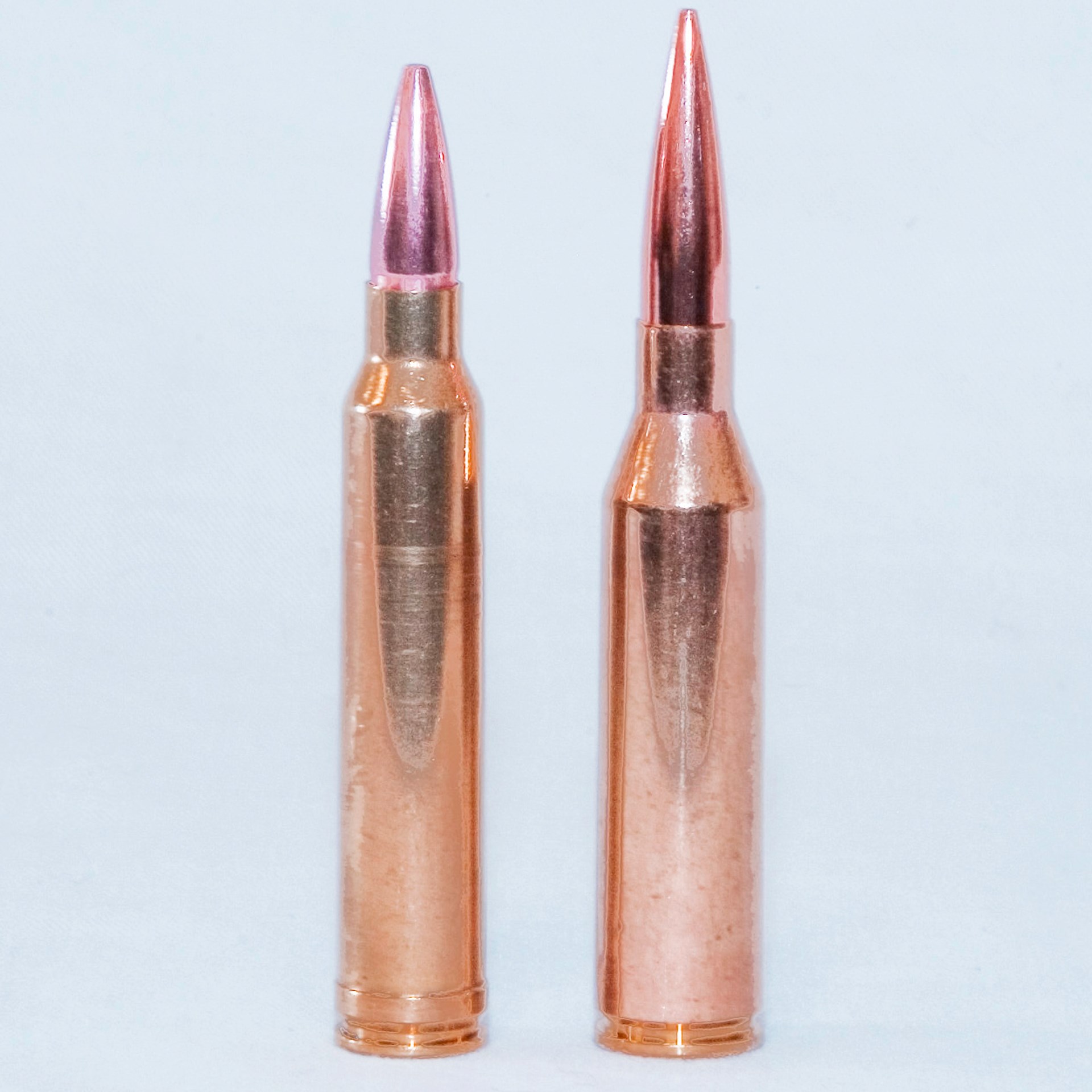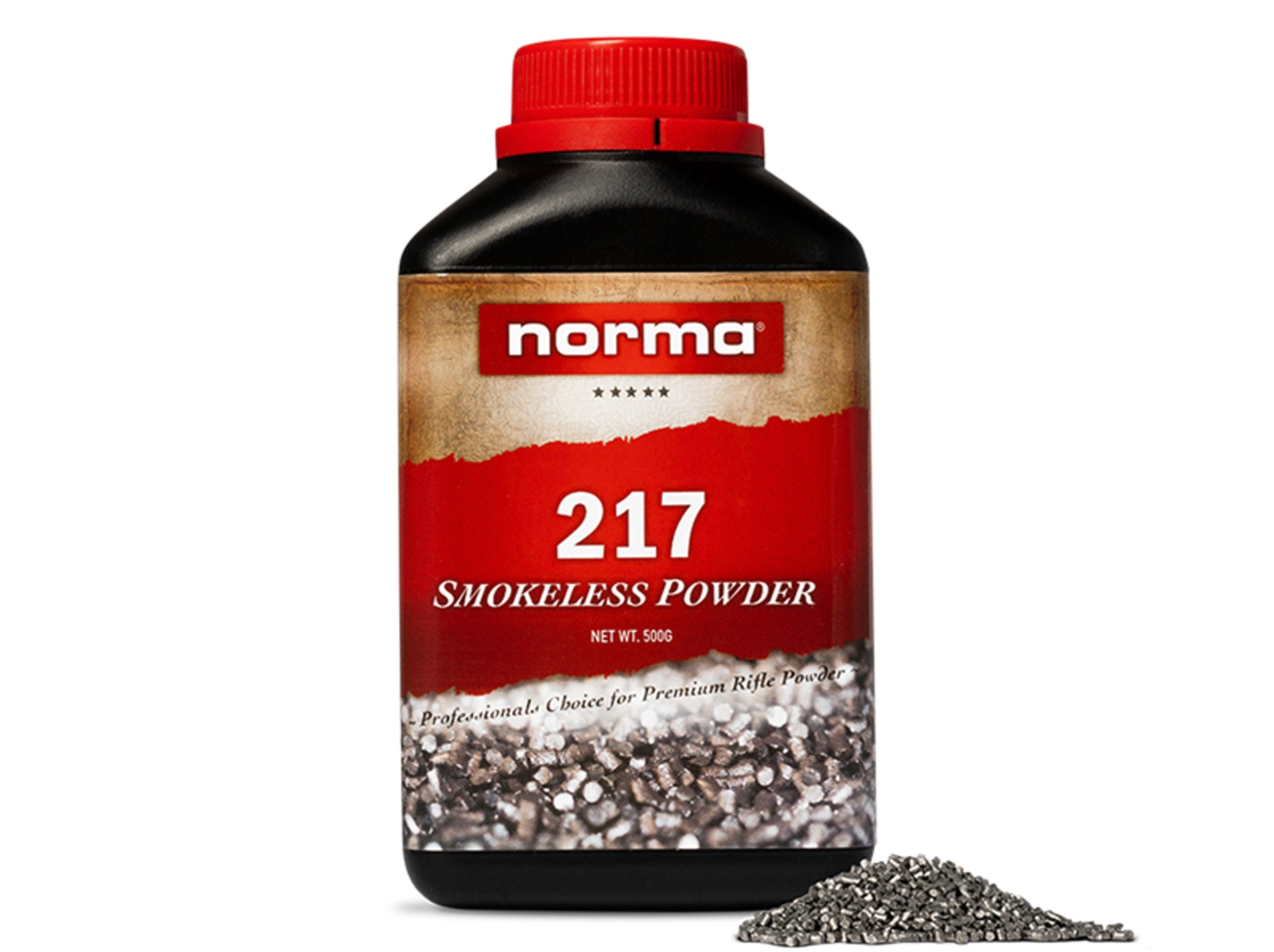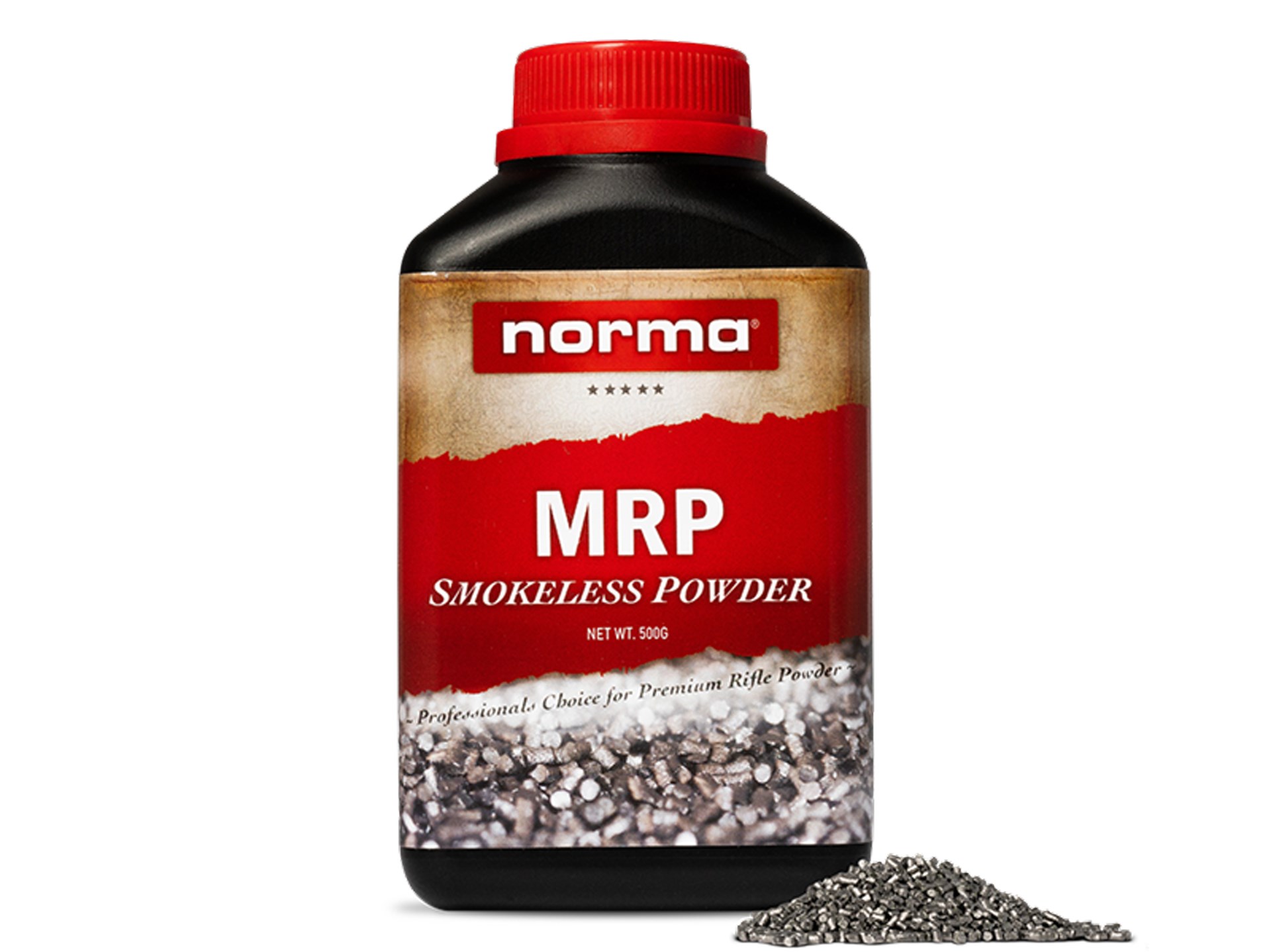Category: Ammo
357 MAGNUM: History & Relevance

As the new millennium was coming, cartridge development centered around eliminating the belt that wraps around the base of the Holland & Holland magnum cartridges. The belt was found by some to be superfluous, and an increase of the diameter of the case allowed for more powder, which resulted in greater velocity. Remington was first out of the gate when it introduced the .300 Remington Ultra Mag (RUM). Based upon the .404 Jeffery case, the .300 RUM slightly exceeded velocity produced by the popular .300 Winchester Magnum (Win. Mag.), a .375 H&H Magnum (Mag.) derivative. Two years later, Winchester counterpunched with the .300 Winchester Short Magnum (WSM), giving shooters virtually identical performance in a shorter, lighter and stiffer receiver. The WSM cartridge is 0.75” shorter than the Remington offering and was immediately successful.
Meanwhile, the Swedish firm Norma Precision was looking to expand its cartridge lineup. Its .308 Norma Magnum (Mag.), developed in 1960 and based upon the .375 H&H Mag. case, by way of the .358 Norma Magnum (Mag.), had a following in the U.S. but was limited because few, if any, U.S. rifle manufacturers chambered their rifles in it. Schultz & Larson and Husqvarna chambered rifles for it, but if you wanted an American rifle in that chambering, it would have to have been a custom job. By 2009, long-range sniping was enjoying more popularity, and Norma decided to give itself a .33-cal. facelift.

Long-range shooting competitor Jimmy Sloan designed a cartridge that would shoot the .338-cal., 300-grain Sierra MatchKing bullet in a Remington long-action receiver with the bullet seated out as far as possible so as to not impinge on powder capacity. His first efforts were based upon the .416 Rigby parent case, and later, he worked out an agreement with Norma to produce the .338 Norma Magnum (Mag.). The rifle/cartridge combo did well at long-range matches and became part of Norma’s commercial product line. It is similar to the .338 Lapua Magnum (Mag.), giving up some 120 f.p.s. to the Finnish round with a 300-grain bullet.
It was several years later, in 2012, Norma went to task modifying its .338-cal. cartridge. After necking it down to .30 cal., it was christened as the .300 Norma Magnum (Mag.) to differentiate it from its prior .308 Norma Magnum (Mag.). It launches a 230-grain Berger Hybrid bullet at 2,985 f.p.s. out of a 27″ barrel, with the bullet retaining supersonic velocities past 1,500 meters and more than 4,400 ft.-lbs. of energy, according to Norma. Accuracy is so good that the United States Special Operations Command (USSOCOM) adopted the cartridge for its Mk22 Mod 0 Advanced Sniper Rifle in 2017.

While the target and tactical successes of the .300 Norma Mag. garner most of the attention, a few stalwart souls have been using the cartridge in the hunting fields. A very good friend of mine is so impressed with the cartridge, he has bought two rifles chambered for it. One is the Barrett MRAD pictured here; the other is a Blaser R8. He has hunted with both rifles, taking several elk and deer with the Blaser and an Alaskan moose, mountain goat and a wolverine with the Barrett.
One of the elk was taken at a measured 500 yards. Here is his account, “[The] bull was exactly 500 yards facing me, quartering to my left. [One] shot entered just behind his left shoulder, taking out one lung, exited last rib and destroying liver. The bull did not take a step, fell over shook his head one time and expired. No bullet recovery, complete pass through.”

My friend is a superb and well-disciplined rifleman and carries the latest rangefinding and ballistic calculators with him when afield. He has taken several pronghorn from 150 to 450 yards with the .300 Norma Mag. He limits his shots on game animals to 500 yards, though he can ring steel considerably further than 1,500 yards. No animal, save one elk, required more than one shot. That single elk was hit in one lung at 300 yards and went down upon impact, though a moment later, it raised its head, signifying the need for one additional shot, which quickly finished the large-framed animal.

Like its .30-cal. older sibling, the .308 Norma Mag., the .300 Norma Mag. hasn’t received mass attention from the general population of U.S. hunters and shooters. It gets more attention from the long-range crowd. However, reloaders are finding a lot to like about the cartridge. Much of its reputed accuracy comes from the Norma brass, which is very uniform. Case capacity is 103.0 grains of water.
As for gunpowder, Norma steers reloaders toward its own line of powders—no shocker—with MRP and Norma 217. Norma has data for bullets as light as the 150-grain Barnes TSX, starting with 86.6 grains of MRP at 3,343 f.p.s. and maxing out at 91.2 grains of MRP for 3,572 f.p.s. At the top end of bullet weights, 82.7 grains of Norma 217 will send that 230-grain Berger Hybrid out of the muzzle at 2,789 f.p.s., maxing out at 87.0 grains yielding 2,940 f.p.s. Most states require expanding bullets for hunting, and at these velocities strongly constructed bullets like Barnes TSX or Swift’s Scirocco II and A-Frame should be used. Softer cup-and-core bullets will almost always fragment excessively at these velocities.

The .300 Norma Mag. represents one of the latest efforts to explore the velocity spectrum’s upper threshold while maintaining a very high benchmark for accuracy. Experimenters will continually press the limits in that regard. While many magnum cartridges have fallen by the wayside, until something really different comes along, this one may be at the top of its class for a long time.
.375 H&H Magnum Explaine
From SGAmmo – Another Ammo Shortage
News from Shotshow 2024: I just got home from 4 days in Las Vegas at the shotshow, where I met with the people from the factories we work with, factory sales people, factory directors and owners, importers, etc.
The big point of discussion seemed to be shortness in supply for nitrocellulose, which is the raw material used to make gunpowder and other propellants and explosives. Based on these conversations, the issue seems to be based on 2 factors, decreased availability in the supply chain and increased demand for the manufacturing of military ordnance.
Getting into the details and a little more, a huge percentage of the nitrocellulose used to make gunpowder historically came from China and Russia, however according to my conversations with industry partners, the Chinese manufacturers who historically were the biggest suppliers at over 30% of the market share are no longer willing to ship raw nitrocellulose to the USA or NATO member countries in attempt to reduce the USA & NATO’s ability to supply Ukrainian forces with artillery shells, and of course Russia who historically was the 2nd biggest supplier is out of the supply chain as well.
This decrease in supply in raw material has gunpowder manufacturers in the USA raising prices dramatically and cutting off many of the smaller ammo manufacturers.
The 2nd part of this issue is the demand for military ordnance, like 155mm artillery shells that use huge quantities gunpowder propellants, and the gunpowder manufacturers switching production to this type of gunpowder with what supply of nitrocellulose they do get.
The first reason is that they always put the US government’s needs before those of the commercial market, and the second reason is that it is simply much more profitable to manufacturer military ordnance than it is small caliber ammunition, so they get a much more profitable price manufacturing powder for artillery shells.
In conclusion, while most of the factories seem to have gunpowder stockpiled today, this issue is expected to catch up to them no later than the summer of 2024 and possibly within a few months, and when it does it will mean the factories will be capable of producing much less small caliber ammunition to sell to the US commercial market.
If demand for ammo is low to moderate, you may not see a big change, but if demand were to go way up as it does periodically, the factories will not be able to ramp up capacity to fill that demand. In my opinion, a lot could go wrong in the commercial ammo supply chain in 2024 and it would be wise to stock up sooner than later as 2024 price increases have just started to set in on just a handful of select items so far, and availability is still good which has held prices down temporarily.
Remember these?
Its a Ithaca 22 lever action m49
